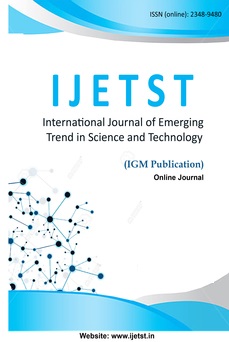AI-Powered Automation of Data Pipelines: Bridging Data Engineering and Intelligent Systems
International Journal of Emerging Trends in Science and Technology,
,
14 April 2022
,
Page 1-17
https://doi.org/10.18535/ijetst/v9i3.03
The presence of AI and advanced data engineering has transformed ITS and physical infrastructure and resolved main issues to urban mobility. This article is aimed at revealing the role of AI solutions in improving traffic flow, safety levels and emissions. Smart traffic signals, big data technology, and predictive algorithms have gone a long way to negate traffic jams, as well as emissions and enhance travel time and security. Real examples illustrate the applicability of AI when it comes to traffic control in cities and in self-driving cars.
The modern nature of the business requires openness and connectivity, making it difficult to manage ever-increasing volumes of data in enterprises. Application of Artificial Intelligence in automation of data pipelines is a game changer in data engineering that seeks to close data to intelligence chasm. This gives AI the ability to co-ordinate machine learning, natural language processing and advanced orchestration tools to create complex and sustainable pipelines which allows for real-time data ingestion, transformation and delivery.
This article aims to demonstrate the change that AI brings into organizations’ daily vocabulary by automating mostly clerklike tasks, making use of various methodologies like, Anomaly detection, Predictive analytics and Dynamic resource allocation. Through case studies, large scale implementation of AI DP in areas of financial fraud detection, IoT based smart manufacturing, and smart retail experiences are shown.
The foremost advantage is that, using MEAN, it becomes possible to decrease latency, improve scalability, and increase the overall operational efficiency as a result of proper integration and better inbuilt functions of corresponding supplying tools and technologies Nevertheless, there are still crucial problems such as data security, ethical approaches to the usage of AI, and integration of MEAN with legacy systems. The article also expands to future possibilities such as linking of quantum computing and generative AI to create optimizing pipelines. In doing so, this research also draws focus on the future of data engineering powered by AI automation to promote intelligent decision making and innovation in the industries.




